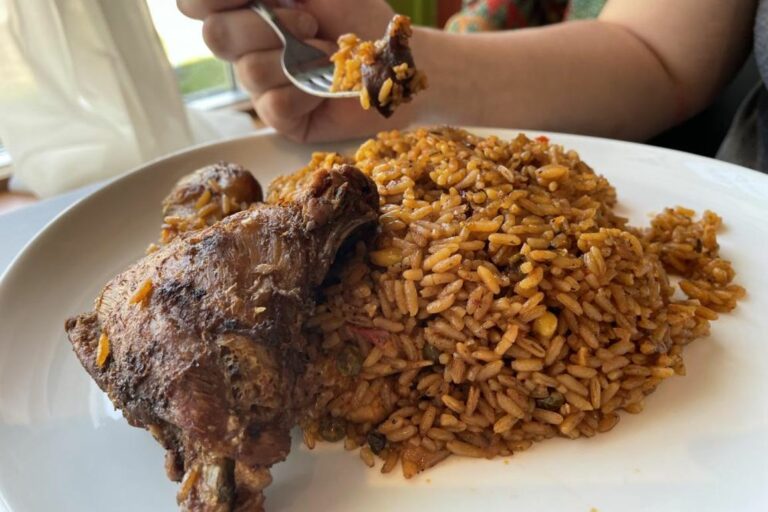Introduction: Liberian Cuisine
Liberian cuisine is a fusion of African, European, and American influences that have evolved over time. The country’s varied terrain and diverse climate have resulted in a unique culinary tradition that is rich in flavor and texture. Liberian cuisine is characterized by its use of cassava, rice, plantains, and various meats and seafood.
West African Influence on Liberian Cuisine
Liberia, like many other West African countries, has a vibrant food culture that is influenced by its neighboring countries. The food in Liberia shares many similarities with its neighboring countries, including Sierra Leone, Guinea, and Ivory Coast. The influence of these countries can be seen in the use of similar ingredients and cooking techniques.
Similarities with Neighboring Countries
Liberian cuisine shares many similarities with the cuisine of its neighboring countries. For example, the use of rice as a staple food is common throughout West Africa. In Liberia, rice is often served with stews, sauces, or soups made from peanuts, cassava, plantains, or meat. Similar dishes can be found in Sierra Leone and Ivory Coast.
Staple Foods in West Africa and Liberia
West African cuisine is known for its use of starchy foods such as cassava, yams, and plantains. These foods are often boiled, fried, or mashed and served with stews or sauces. In Liberia, cassava is a staple food that is used to make fufu, a popular dish that is served with soup or stew. Yams and plantains are also commonly used in Liberian cuisine, as they are in other West African countries.
Popular Spices and Seasonings in Liberian Cuisine
Liberian cuisine is known for its use of aromatic spices and seasonings such as ginger, garlic, onion, and chili pepper. These ingredients are often combined with palm oil to create rich, flavorful dishes. Other common seasonings in Liberian cuisine include thyme, bay leaves, and curry powder. These spices and seasonings are also used in other West African countries, such as Ghana and Nigeria.
Conclusion: The Impact of West African Influence on Liberian Cuisine
In conclusion, Liberian cuisine is heavily influenced by the culinary traditions of its neighboring West African countries. The use of similar ingredients and cooking techniques can be seen throughout the region. Liberia’s staple foods, such as cassava and rice, are also common in other West African countries. The use of aromatic spices and seasonings is another example of the influence of West African cuisine on Liberian cuisine. Through this cultural exchange, Liberian cuisine has evolved into a unique and delicious culinary tradition.

